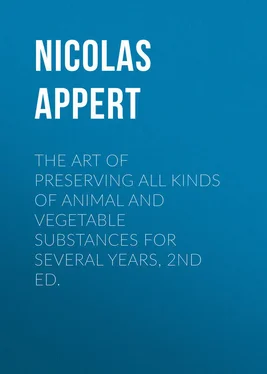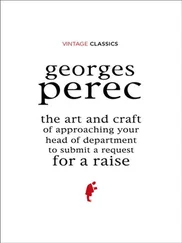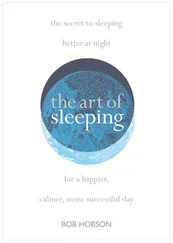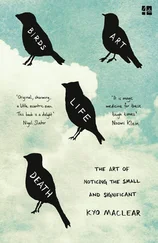Nicolas Appert - The Art of Preserving All Kinds of Animal and Vegetable Substances for Several Years, 2nd ed.
Здесь есть возможность читать онлайн «Nicolas Appert - The Art of Preserving All Kinds of Animal and Vegetable Substances for Several Years, 2nd ed.» — ознакомительный отрывок электронной книги совершенно бесплатно, а после прочтения отрывка купить полную версию. В некоторых случаях можно слушать аудио, скачать через торрент в формате fb2 и присутствует краткое содержание. Жанр: foreign_antique, foreign_prose, на английском языке. Описание произведения, (предисловие) а так же отзывы посетителей доступны на портале библиотеки ЛибКат.
- Название:The Art of Preserving All Kinds of Animal and Vegetable Substances for Several Years, 2nd ed.
- Автор:
- Жанр:
- Год:неизвестен
- ISBN:нет данных
- Рейтинг книги:5 / 5. Голосов: 1
-
Избранное:Добавить в избранное
- Отзывы:
-
Ваша оценка:
- 100
- 1
- 2
- 3
- 4
- 5
The Art of Preserving All Kinds of Animal and Vegetable Substances for Several Years, 2nd ed.: краткое содержание, описание и аннотация
Предлагаем к чтению аннотацию, описание, краткое содержание или предисловие (зависит от того, что написал сам автор книги «The Art of Preserving All Kinds of Animal and Vegetable Substances for Several Years, 2nd ed.»). Если вы не нашли необходимую информацию о книге — напишите в комментариях, мы постараемся отыскать её.
The Art of Preserving All Kinds of Animal and Vegetable Substances for Several Years, 2nd ed. — читать онлайн ознакомительный отрывок
Ниже представлен текст книги, разбитый по страницам. Система сохранения места последней прочитанной страницы, позволяет с удобством читать онлайн бесплатно книгу «The Art of Preserving All Kinds of Animal and Vegetable Substances for Several Years, 2nd ed.», без необходимости каждый раз заново искать на чём Вы остановились. Поставьте закладку, и сможете в любой момент перейти на страницу, на которой закончили чтение.
Интервал:
Закладка:
Before I state the details of my process, I ought to observe that it consists principally,
1st. In inclosing in bottles the substances to be preserved.
2d. In corking the bottles with the utmost care; for it is chiefly on the corking that the success of the process depends.
3d. In submitting these inclosed substances to the action of boiling water in a water-bath (BALNEUM MARIAE), for a greater or less length of time, according to their nature, and in the manner pointed out with respect to each several kind of substance.
4th. In withdrawing the bottles from the water-bath at the period described.
§ II.
Description of my Rooms set apart for carrying on the Process on a large Scale. 5 5 It is obvious, that for the use of private families, and for carrying on the process on a small scale, nothing further will be requisite, than such vessels and other conveniences as are found in every house in the country, where provisions are cured for the consumption of the family during winter.
My laboratory consists of four apartments. The first of these is furnished with all kinds of kitchen utensils, stoves, and other apparatus, necessary for dressing the animal substances to be preserved, as well as with a kettle for broth, gravy, &c. containing 180 French pints, raised on brick work. This kettle is provided with a pot to be put within it, pierced with holes like a skimmer, with divisions for holding various kinds of meat and poultry. This pot can be put into and taken out of the kettle with ease. The kettle is provided with a wide cock, to which is fitted, within, a little rose, like that of a watering-pot, covered with a piece of boulting-cloth. In this way I can procure broth or gravy quite clear, and ready to be put into bottles.
The second apartment is appropriated to the preparing of milk, cream, and whey.
The third is used for corking and tying the bottles and vessels, and putting them into bags.
The fourth is furnished with three large copper boilers, placed upon stones raised on brick work. These boilers are all furnished with a stout lid, fitted, to rest upon the vessels within. Each boiler is furnished with a wide cock below, in order to let out the water at a proper time. These large boilers are destined to receive, generally, all the objects intended to be preserved, in order to apply the action of heat to them in a suitable manner; and thus they constitute so many water-baths. 6 6 The reason why it is necessary that large boilers should be furnished with wide cocks is, that it would take up too much time to let so large a body of water, always placed over a heated stove, remain till it became cool; and that, on the other hand, it would do great injury to those substances to let them remain too long exposed to the heat. Without inconvenience, therefore, in private families, any cauldron or earthen vessel may be taken for a water-bath, provided the water rises to the rim of the bottle. In case there should be no vessel sufficiently high, the bottles may be laid down in the water-bath, care being taken to pack them well together, lest they should be broken. Many operations have succeeded well with me this way. The corks are somewhat more liable to burst outwards; but if the bottles are well corked, there is nothing to be feared. For instance, it would not be advisable to lay on their sides, bottles, or other vessels stopped up with stoppers consisting of different pieces of any substance, because the action of the fire upon this kind of stopper is stronger; and however well the vessel might be corked, it would not be advisable to incur the risque. Small water-baths are the more convenient, because they may be placed any where, and removed at will. They soon become cold. The bottles are taken out when the water is sufficiently cool to allow of the finger being put in, and thus the operation is terminated.
The utensils which furnish the third apartment for the preparatory process consist of
1. Rows of bottle-racks round the room.
2. A reel for the iron wire, to be used for binding the necks of the bottles and other vessels. ( Fig. 1. EXPLANATION OF THE PLATE • Fig. 1. A reel with two iron bars, made use of to double the wire, and cut the doubled wire twice the length required for fixing the corks in the bottles. • Fig. 2. A small machine for twisting the wire one-third of its length after having been doubled by fig. 1. • Fig. 3. An instrument for compressing (and, as it were, biting) the corks three quarters of their length, beginning at the smallest end. • Fig. 4. A stool stuffed with straw, furnished with a wooden stand on which the bottles may be placed to be tied. The same stool will serve to sit on during the corking. • Fig. 5. A hollow block of wood, called a bottle-boot (Casse-Bouteille), within which the bottle is set when it is to be corked. This bottle-boot is furnished with a strong bat for beating in the corks. • Fig. 6. A front and side view of pointed pincers, used for twisting the wire employed to keep on the corks, and for cutting off the superfluous ends of the wire. I make use of flat pincers and scissars for this operation. Neele sc. Strand London Published 25 th . Feb y . 1811 by Black & C o . Leadenhall Str.
)
3. Shears and pincers for tying on the corks. ( Fig. 6. EXPLANATION OF THE PLATE • Fig. 1. A reel with two iron bars, made use of to double the wire, and cut the doubled wire twice the length required for fixing the corks in the bottles. • Fig. 2. A small machine for twisting the wire one-third of its length after having been doubled by fig. 1. • Fig. 3. An instrument for compressing (and, as it were, biting) the corks three quarters of their length, beginning at the smallest end. • Fig. 4. A stool stuffed with straw, furnished with a wooden stand on which the bottles may be placed to be tied. The same stool will serve to sit on during the corking. • Fig. 5. A hollow block of wood, called a bottle-boot (Casse-Bouteille), within which the bottle is set when it is to be corked. This bottle-boot is furnished with a strong bat for beating in the corks. • Fig. 6. A front and side view of pointed pincers, used for twisting the wire employed to keep on the corks, and for cutting off the superfluous ends of the wire. I make use of flat pincers and scissars for this operation. Neele sc. Strand London Published 25 th . Feb y . 1811 by Black & C o . Leadenhall Str.
)
4. Machine for twisting the iron-wire after it has been divided and cut to a proper length. ( Fig. 2. EXPLANATION OF THE PLATE • Fig. 1. A reel with two iron bars, made use of to double the wire, and cut the doubled wire twice the length required for fixing the corks in the bottles. • Fig. 2. A small machine for twisting the wire one-third of its length after having been doubled by fig. 1. • Fig. 3. An instrument for compressing (and, as it were, biting) the corks three quarters of their length, beginning at the smallest end. • Fig. 4. A stool stuffed with straw, furnished with a wooden stand on which the bottles may be placed to be tied. The same stool will serve to sit on during the corking. • Fig. 5. A hollow block of wood, called a bottle-boot (Casse-Bouteille), within which the bottle is set when it is to be corked. This bottle-boot is furnished with a strong bat for beating in the corks. • Fig. 6. A front and side view of pointed pincers, used for twisting the wire employed to keep on the corks, and for cutting off the superfluous ends of the wire. I make use of flat pincers and scissars for this operation. Neele sc. Strand London Published 25 th . Feb y . 1811 by Black & C o . Leadenhall Str.
)
5. Two instruments forming a lever, and used for compressing, and as it were biting the corks. ( Fig. 3. EXPLANATION OF THE PLATE • Fig. 1. A reel with two iron bars, made use of to double the wire, and cut the doubled wire twice the length required for fixing the corks in the bottles. • Fig. 2. A small machine for twisting the wire one-third of its length after having been doubled by fig. 1. • Fig. 3. An instrument for compressing (and, as it were, biting) the corks three quarters of their length, beginning at the smallest end. • Fig. 4. A stool stuffed with straw, furnished with a wooden stand on which the bottles may be placed to be tied. The same stool will serve to sit on during the corking. • Fig. 5. A hollow block of wood, called a bottle-boot (Casse-Bouteille), within which the bottle is set when it is to be corked. This bottle-boot is furnished with a strong bat for beating in the corks. • Fig. 6. A front and side view of pointed pincers, used for twisting the wire employed to keep on the corks, and for cutting off the superfluous ends of the wire. I make use of flat pincers and scissars for this operation. Neele sc. Strand London Published 25 th . Feb y . 1811 by Black & C o . Leadenhall Str.
)
Интервал:
Закладка:
Похожие книги на «The Art of Preserving All Kinds of Animal and Vegetable Substances for Several Years, 2nd ed.»
Представляем Вашему вниманию похожие книги на «The Art of Preserving All Kinds of Animal and Vegetable Substances for Several Years, 2nd ed.» списком для выбора. Мы отобрали схожую по названию и смыслу литературу в надежде предоставить читателям больше вариантов отыскать новые, интересные, ещё непрочитанные произведения.
Обсуждение, отзывы о книге «The Art of Preserving All Kinds of Animal and Vegetable Substances for Several Years, 2nd ed.» и просто собственные мнения читателей. Оставьте ваши комментарии, напишите, что Вы думаете о произведении, его смысле или главных героях. Укажите что конкретно понравилось, а что нет, и почему Вы так считаете.












